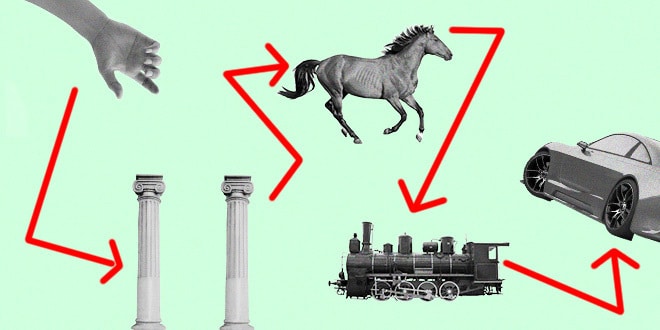According to George Carlin, “If God had intended us not to masturbate, he would have made our arms shorter.”

A recent representative survey of 6000 14-94 year old US citizens found that virtually all of them had masturbated at some point in their lives. That should be no real surprise: it seems to be a fact we know intuitively, and we don’t really require a large survey to support the fact that most people masturbate. Masturbation is undoubtedly the most common form of sexual expression. It’s also one of the least discussed. Why?
Masturbation has been seen differently at different times by different peoples, some as taboo, some, more recently, as progressive. Male and female masturbation is depicted in prehistoric rock and cave paintings the world over, suggesting that we were aware in our early-modern development that there was a connection between human sexuality, and abundance.
That said, and despite the presence in the archaeological record of depictions of women masturbating, male masturbation seems to feature in ancient art more regularly. It could be that it’s simply easier to draw a man masturbating than a woman, but I suspect the real reason is not so superficial.
The ancient Sumerians had a famously relaxed attitude to sexual expression. According to them, the rivers Tigris and Euphrates and were created, and made fertile, by the god Enki masturbating into them. They believed that masturbation enhanced virility, and the men would often use a special lubricant mixed with crushed iron ore to strengthen the firmness of their erections.
The Egyptians, perhaps sharing a common cultural heritage with the Sumerians, believed for a time that the entire universe was created by the masturbation and ejaculation of the god Atum. In Egypt, masturbation, both male and female, could easily be interpreted as a magical, even divine act. This belief would later permeate ancient Greek myths and legends, which often picture satyrs – half horse, half man, with constant erections – drinking wine and masturbating. In the Western world, it seems it was this transition that planted the seeds that would lead to masturbation being seen as offensive behaviour: over time, satyrs merged with pans in the mythic consciousness and masturbation became viewed as bestial and indecently uninhibited.
By the time the Old Testament was being compiled, masturbation was already starting to be considered sinful, as we see in the story of Onan who was killed by god for ejaculating outside the body of his brother’s widow, thereby failing to impregnate her against God’s will. When Rome was in its ascension, masturbation had become rarely discussed, and by the time Diogenes was admonished for masturbating in public in the 4th century CE, masturbation had become outright scandalous, and would remain so until this day.
It’s not ubiquitous though. Several African Congolese tribes, like the Aka and Ngandu, have no word for masturbation in their language and are, apparently, confused by the very concept of it. Aren’t we all.
There are measurable differences in our masturbatory behavior. Some are obvious: men are either more likely to masturbate more, or at least more likely to admit to it, than women. Men also appear to do it more frequently than women. Teenagers and college students masturbate the most of any age group, on average two or three times a week, and the frequency of masturbation inevitably declines with age.
There are some surprises too. The evidence suggests that women masturbate more when they’re in a sexually active relationship. Conventional wisdom would expect it to be the other way around. But the pattern is real: more sex leads to more masturbation, not less.
It’s a shame, then, that masturbation, the safest form of sexual expression, has for hundreds of years been thought to have terrible physical, psychological, and spiritual consequences. Since the bible instructs us to be fruitful and multiply, the act of orgasming without a partner is an act of blasphemy. In fact, the influential theologian St. Thomas Aquinas considered masturbation to be worse than rape, incest, and adultery, because at least in these terrible acts there was still the chance for reproduction. Such is the logic in early Judeo-Christian theology.
The Victorians blamed masturbation for everything from dubious morality, social failure, epilepsy, tuberculosis, blindness, insanity, sterility, and early death. It’s no surprise that dozens of crank folktales and ‘cures’ for masturbation come from this period. Men might be encouraged to wear straightjackets in bed to prevent them from the temptation to touch themselves. Little suits of armor and specially designed codpieces prevented genital contact. Kellogg’s Corn Flakes were invented to decrease the sex drive and prevent the desire for masturbation. We’re not so progressive as we think we are even today. It wasn’t long ago that Pee Wee Herman had his star on the sidewalk of Hollywood Boulevard removed after being caught masturbating in a porno theatre.
The truth of masturbation is that it’s physically and psychologically harmless. In fact, there are a number of benefits to masturbation, proved time and time again throughout history. Alongside the simple sexual pleasure it offers, masturbation relieves stress and lowers blood pressure, enhances intimacy between couples, may contribute towards fertility and potentially lowers the chances of prostate cancer by helping to flush out potentially carcinogenic substances present in the prostate gland.
It helps men and women alike learn their bodies and sexual responses. In fact, there’s a correlation between women who masturbated frequently during adolescence and the ability to achieve orgasm later in life.
There’s no cure for masturbation. In fact, in most cases, masturbation is the cure.
For related content, check out:
